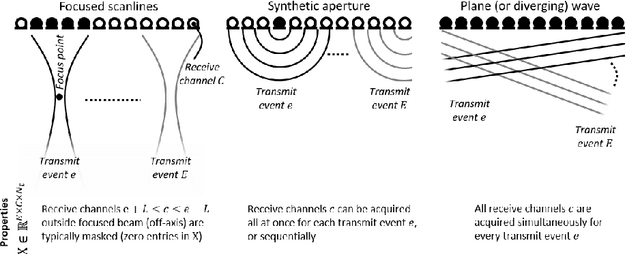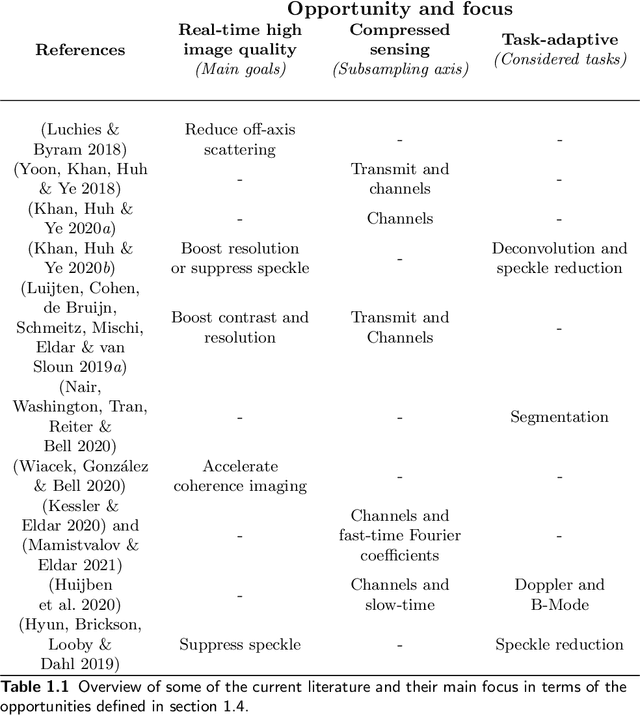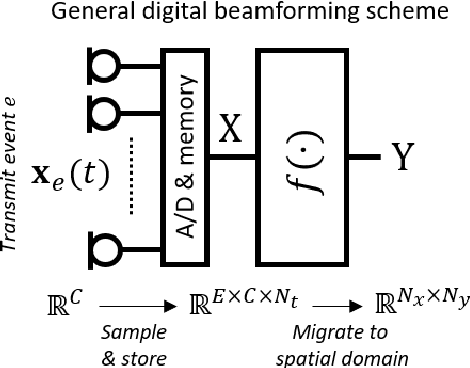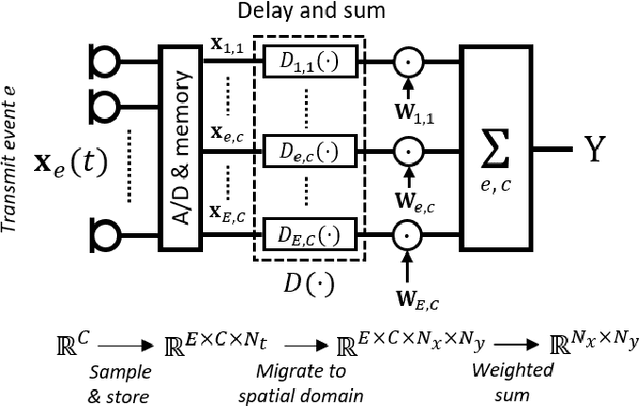Deep Learning for Ultrasound Beamforming
Paper and Code
Sep 23, 2021



Diagnostic imaging plays a critical role in healthcare, serving as a fundamental asset for timely diagnosis, disease staging and management as well as for treatment choice, planning, guidance, and follow-up. Among the diagnostic imaging options, ultrasound imaging is uniquely positioned, being a highly cost-effective modality that offers the clinician an unmatched and invaluable level of interaction, enabled by its real-time nature. Ultrasound probes are becoming increasingly compact and portable, with the market demand for low-cost pocket-sized and (in-body) miniaturized devices expanding. At the same time, there is a strong trend towards 3D imaging and the use of high-frame-rate imaging schemes; both accompanied by dramatically increasing data rates that pose a heavy burden on the probe-system communication and subsequent image reconstruction algorithms. With the demand for high-quality image reconstruction and signal extraction from less (e.g unfocused or parallel) transmissions that facilitate fast imaging, and a push towards compact probes, modern ultrasound imaging leans heavily on innovations in powerful digital receive channel processing. Beamforming, the process of mapping received ultrasound echoes to the spatial image domain, naturally lies at the heart of the ultrasound image formation chain. In this chapter on Deep Learning for Ultrasound Beamforming, we discuss why and when deep learning methods can play a compelling role in the digital beamforming pipeline, and then show how these data-driven systems can be leveraged for improved ultrasound image reconstruction.
 Add to Chrome
Add to Chrome Add to Firefox
Add to Firefox Add to Edge
Add to Edge